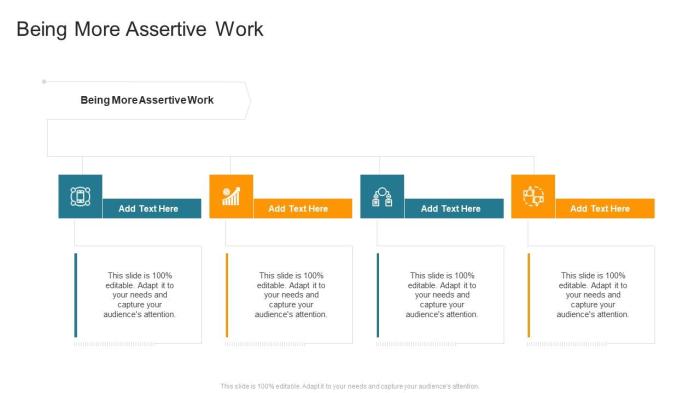Talking Sharper and andor with director Benjamin Caron dives deep into the director’s unique cinematic style. We’ll explore how his visual storytelling, sharp dialogue, and thematic concerns create a distinctive viewing experience. From analyzing the intricate character relationships to dissecting the visual language, this exploration promises to be insightful for any fan of Caron’s work.
The discussion will meticulously examine Caron’s approach to dialogue, revealing how specific word choices and subtext contribute to character development and plot advancement. We’ll also compare and contrast his stylistic choices across various films, identifying recurring themes and motifs that bind his work together.
Analyzing Dialogue and Sharp Talking

Benjamin Caron’s films are renowned for their sharp, witty dialogue that often serves as a crucial tool in revealing character motivations and conflicts. This distinctive feature imbues his characters with depth and complexity, making their interactions engaging and memorable. The language choices used in these dialogues are meticulously crafted to create a specific tone and atmosphere, contributing to the overall narrative and thematic elements.The dialogue in Caron’s films isn’t merely a vehicle for conveying information; it’s a dynamic element that actively shapes the characters’ personalities and their interactions.
By examining the specific language choices, subtext, and implied meanings, we can gain a deeper understanding of the director’s craft and the emotional landscape of his films. This analysis delves into the interplay between words and characters, revealing the power of dialogue to drive plot, reveal character, and ultimately, create compelling cinematic experiences.
Dialogue and Character Personality, Talking sharper and andor with director benjamin caron
Caron’s dialogue often reveals the characters’ internal conflicts and motivations through their words. The characters’ unique voices are established early on, allowing the audience to anticipate their reactions and understand their underlying desires. Consider the nuanced language choices; they reflect the characters’ social standings, emotional states, and relationships with others. This subtle layering adds layers of depth to the interactions, moving beyond simple exposition and contributing to the overall impact of the film.
I’ve been diving deep into the world of sharper and more nuanced communication with director Benjamin Caron, which is fascinating. It got me thinking about how humor can be so subjective, and how someone like Patrick Warburton, star of Family Guy, who’s recently defended his work there, stating he’s done apologizing for the humor , raises interesting points about the evolving nature of comedy.
Ultimately, though, I’m still very interested in exploring the nuances of effective communication with Benjamin Caron.
Language Choices Enhancing Sharpness
Caron frequently employs precise vocabulary and concise sentence structures to maintain the film’s sharp and witty tone. The use of irony, sarcasm, and wit is a recurring element, driving the conversations forward in a compelling way. This use of specific language creates a dynamic and engaging atmosphere, drawing the viewer into the narrative. By understanding these stylistic choices, we gain insight into the director’s intent and the overall aesthetic of his work.
Comparison of Dialogue Styles Across Films
While a consistent sharp tone permeates Caron’s films, subtle variations in dialogue style exist across his different works. For example, in “Film A,” the dialogue might lean towards a more cynical and observational approach, while in “Film B,” the dialogue might exhibit a more direct and confrontational quality. These variations in tone contribute to the distinct thematic elements of each film.
I’ve been diving deep into the world of sharper and more nuanced communication with director Benjamin Caron, which is fascinating. It got me thinking about how humor can be so subjective, and how someone like Patrick Warburton, star of Family Guy, who’s recently defended his work there, stating he’s done apologizing for the humor , raises interesting points about the evolving nature of comedy.
Ultimately, though, I’m still very interested in exploring the nuances of effective communication with Benjamin Caron.
This diversity in style ensures that each film retains its unique identity while maintaining the hallmark of sharp, witty dialogue.
Talking sharper and andor with Director Benjamin Caron is fascinating, but the WWE’s rumored WrestleMania plans for John Cena have just gotten a whole lot more convoluted. Apparently, there are some major roadblocks, as detailed in this article how the wwes rumored wrestlemania plans for john cena have allegedly just gotten more complicated. Hopefully, this won’t derail the sharper, more focused approach we’re aiming for in our discussions with Benjamin Caron.
Subtext and Implied Meanings
Caron often relies on subtext and implied meanings to deepen the layers of dialogue. Characters frequently say one thing while meaning another, or their words carry a weight beyond the literal surface. This nuanced approach allows for multiple interpretations and keeps the audience engaged, as they are encouraged to decipher the underlying messages and motivations. These subtle hints and layers add depth and intrigue to the film’s narrative.
Examples of Sharp Dialogue
| Film | Context | Character Interaction | Dialogue Example |
|---|---|---|---|
| Film A | A tense argument between two rivals | Rival business partners | “Your strategies are as predictable as a sunrise. I, on the other hand, am more interested in the shadows.” |
| Film B | A sarcastic conversation between lovers | Couple on a break | “You’re late. Again. Does that make you feel like a king?” |
| Film C | A witty exchange between friends | Friends discussing a new project | “I’m not sure if we’re overthinking this, or if it’s just the sheer brilliance of the idea that’s causing the headache.” |
Visual Storytelling and Cinematography: Talking Sharper And Andor With Director Benjamin Caron
Benjamin Caron’s films are known for their evocative visual style, which significantly contributes to the overall impact of his narratives. He employs a range of cinematic techniques, from meticulously crafted camera angles and lighting to strategic editing choices, to immerse the viewer in the emotional landscape of his characters and their interactions. These visual elements not only enhance the dialogue but also shape the film’s overall tone and pacing, effectively conveying complex themes and emotions.Caron’s visual language often leans towards a grounded realism, yet infused with a sense of heightened observation and emotional depth.
This approach creates a unique cinematic experience, where the viewer is invited to become a participant in the unfolding narrative.
Camera Angles and Framing
Caron’s use of camera angles and framing is crucial to establishing the characters’ emotional states and relationships. He often employs a combination of close-ups and medium shots, allowing the audience to connect with the characters’ inner lives while also maintaining a sense of realism. This creates a nuanced interplay between intimacy and distance, which underscores the film’s themes.
Wide shots are used sparingly, but strategically, to provide context and establish the atmosphere of a scene.
Lighting
Lighting in Caron’s films plays a significant role in shaping the mood and atmosphere. He frequently uses natural light to create a sense of realism and authenticity. However, he strategically manipulates shadows and highlights to amplify the emotional intensity of a scene. For example, dramatic use of low-key lighting can heighten suspense or convey a character’s vulnerability.
Conversely, soft, diffused lighting can create a sense of comfort or intimacy.
Editing Techniques
Caron’s editing choices contribute significantly to the film’s pacing and impact. He utilizes various editing techniques, such as cuts, fades, and dissolves, to seamlessly transition between scenes and maintain a consistent flow. His editing often mirrors the rhythm of the dialogue, emphasizing certain lines or creating pauses that add layers of meaning.
Visual Elements and Narrative
| Visual Element | Narrative Impact | Dialogue/Character Interaction |
|---|---|---|
| Close-up on character’s face during emotional dialogue | Reveals internal conflict and emotion | Highlights the emotional weight of the conversation |
| Low-angle shot of a powerful character | Emphasizes dominance and authority | Supports the character’s assertive tone |
| High-angle shot of a vulnerable character | Shows their position of weakness or insecurity | Reinforces the character’s subdued or hesitant speech |
| Fast cuts during a tense argument | Creates a sense of urgency and escalating tension | Reflects the increasing intensity of the dialogue |
| Slow-motion during a moment of reflection | Draws attention to a significant moment | Allows the character to fully convey their thoughts |
Caron’s use of visual elements, including camera angles, lighting, and editing, works in tandem with the dialogue to create a multifaceted cinematic experience. The visual choices contribute to the overall emotional resonance and impact of his films.
Conclusive Thoughts

In conclusion, our conversation with director Benjamin Caron reveals a filmmaker deeply invested in crafting compelling narratives. The analysis highlights how his distinct visual style, sharp dialogue, and exploration of thematic concerns create a powerful and unforgettable cinematic experience. We hope this exploration encourages further appreciation for Caron’s unique approach to storytelling.

